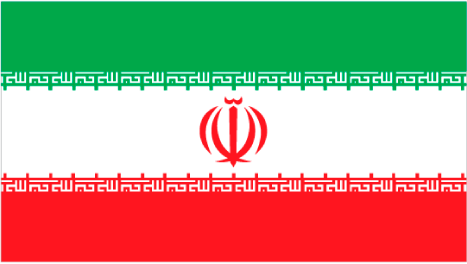To help inspire or plan your trip to Iran, some of its major attractions
for travellers are shown below, including some of the best natural, historical, cultural and adventure sites in the country.
These include all of UNESCO World Heritage Sites for Iran which represent the best
of the world's cultural and natural heritage.
Click on the icons below to focus on specific types of features
(click again to return to all).
|
|
|
|
|
|
|
|
|
|
|
|
 |
|---|---|---|---|---|---|---|---|---|---|---|---|
| Natural | History | Wildlife | Trekking | Cities | Religious Monument | Boat Journey | Rail Journey | Diving | Cultural | Adrenaline | UNESCO WHS |
Religious Monuments in Iran
| Esfahan | |
|---|---|
Esfahan is Iran's pearl, one of the finest places in the Islamic world and one of the great destinations in world travel. Although it dates back to the beginning of the Islamic period, Esfahan reached its peak under Shah Abbas the Great when he moved his capital here at the beginning of the 17th century. Esfahan's most impressive site is the enormous and spectacular Royal Square or Meidan Eman, over 80,000 square metres and the second largest city square in the world. The square, built as a royal polo ground and once home to entertainers, preachers and Silk Road caravans, is bordered on each side by four monumental buildings. The Mosque of Sheikh Lotfollah is renowned for its beautiful dome and exquisite tile work. The Ali Qapu Palace was developed from an earlier Timurid palace and was used by the Shah to receive guests and foreign dignitaries. It is renowned for its superb plaster works and paintings and has a balcony overlooking the square. The magnificent Royal Mosque and the Portico of Qaysariyyeh complete the historical masterpieces. The Imperial Bazaar leads from the square to the north, a labyrinth of alleyways selling carpets, sweets and spices, tiles, jewellery and bright clothes. Other buildings of note include Vank Cathedral in the Armenian quarter of Jolfa, Chehel Sotun Palace also known as 40 Columns Palace due to the reflection of its 20 columns in waters of its fountain and the shaking minarets of Minar-e Jonban. The historic bridges of the Zayandeh River include Si o Se Pol (the Bridge of 33 Arches) and the Khaju Bridge. UNESCO World Heritage Site: Meidan Emam, Esfahan | |
| Yazd | |
|---|---|
Yazd is a desert city that was a major centre along the Silk Road and is the centre of Zoroastrianism, Iran's state religion before the arrival of Islam and a belief which predates Christianity. Over 10,000 believers still reside in the city today. Here the Towers of Silence on a hilltop was the traditional Zoroastrian burial ground, where bodies were left to be eaten by vultures. The Zoroastrian Fire Temple has a flame that has burned for over 1,500 years. Yazd is also renowned for its wind towers or badgirs which captured breezes and cooled living quarters below. The old town of Yazd is perfect for exploring on foot amidst the clay brick houses, ancient Islamic buildings and labyrinthine of narrow alleyways. Other notable attractions include the Jameh mosque with its twin 48 metre minarets, the Doulat Gardens and the Amir Chakhmaq mosque. | |
| Takht-e Soleyman | |
|---|---|
Takht-e Soleyman (or Throne of Solomon) is an archaeological site containing the remains of the Azar Goshnab Zoroastrian Fire Temple dating from the Sassanian period in the 6th and 7th centuries and is the holiest shrine of Zoroastrianism. UNESCO World Heritage Site: Takht-e Soleyman | |
| Sheikh Safi al-din Khanegah and Shrine Ensemble in Ardabil | |
|---|---|
The Sheikh Safi al-din Khanegah and Shrine Ensemble in Ardabil is a Sufi spiritual retreat built between the 16th and 18th centuries. The site is a prime example of medieval Islamic architecture, with richly decorated interiors and a large collection of antiques. UNESCO World Heritage Site: Sheikh Safi al-din Khanegah and Shrine Ensemble in Ardabil | |
| Armenian Monasteries of Iran | |
|---|---|
There are three Armenian monasteries in north-western Iran - St Thaddeus, St Stepanos and the Chapel of Dzordzor which date to the 7th century and have a high spiritual significance for the Armenian Church. These have been rebuilt several times over the past 1,400 years and today are the only vestiges of Armenian culture in this region. UNESCO World Heritage Site: Armenian Monastic Ensembles of Iran | |
| Masjed-e Jamé of Isfahan | |
|---|---|
The Masjed-e Jamé, or ‘Friday mosque’, is located in the historic centre of Esfahan. Begun in 841 AD, it is the oldest preserved edifice of its type in Iran and a prototype for later mosque designs throughout Central Asia. The complex is the first Islamic building that adapted the four-courtyard layout of Sassanid palaces to Islamic religious architecture. Its double-shelled ribbed domes represent an architectural innovation that inspired builders throughout the region. The site also features remarkable decorative details representative of stylistic developments over more than a thousand years of Islamic art. UNESCO World Heritage Site: Masjed-e J?mé of Isfahan | |


